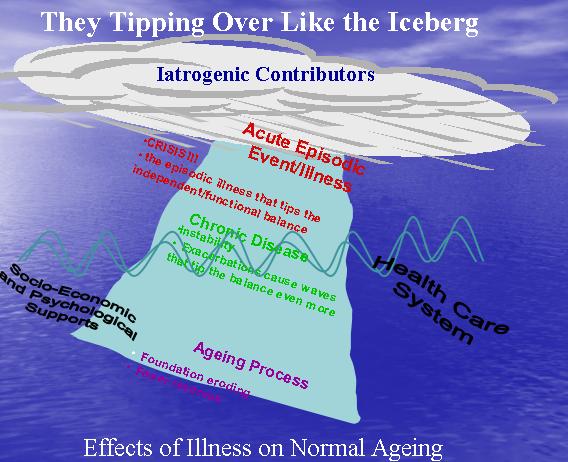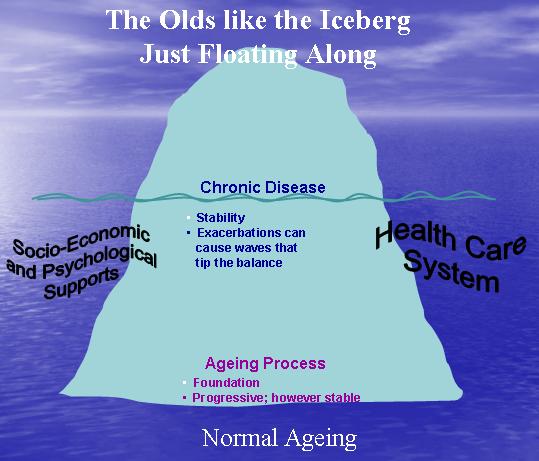Care of the acutely ill older person can be very complex due to the following:
-
Normal physiological aging changes
-
The presence of one or more chronic illnesses for which the person may also be taking medication
-
The effects of the acute illness and treatment.
Visualize your older adult patient as being the “iceberg” sitting in the water that is where you are caring for them. Be this hospital, home or other settings.
As you see, the iceberg has a base foundation upon which it floats on. The width of this base is determined by the age of the older adult. The greater the age, the smaller this base will be because normal ageing sees decline or erosion occurring within the body.
The middle part of the iceberg is where pre-existing chronic diseases/conditions lie. Usually these are stable; however, with each exacerbation there is a change in stability recovery. It too will decrease and erode whenever an acute illness occurs.
Now add to the tip of the iceberg, an acute illness event. Not only does the actual illness adversely impact upon the whole stability of the iceberg; but also, iatrogenic factors (e.g. environment, nososomial infections, lack of resources) further pound away at the iceberg.
 When the iceberg starts tipping in the usually calm water, it will set up a huge turbulence causing many waves. If we as professional care providers do not intervene quickly and appropriately, the iceberg will dissolve and leave in its wake a trail of destruction. When the iceberg dissolves, this is ultimately the death of our older adult and at a very high cost to all
When the iceberg starts tipping in the usually calm water, it will set up a huge turbulence causing many waves. If we as professional care providers do not intervene quickly and appropriately, the iceberg will dissolve and leave in its wake a trail of destruction. When the iceberg dissolves, this is ultimately the death of our older adult and at a very high cost to all
people and the health care system.
Use the Iceberg to help explain what we are dealing with and how to help older adults regain their steadiness in quiet waters.
Download the presentation notes from GENI workshop January 2007 here: (get zip 13 MB | get PDF 19 MB). Includes several slides dedicated to the Iceberg analogy.
Contact Marcia Carr for the Powerpoint if needed.

